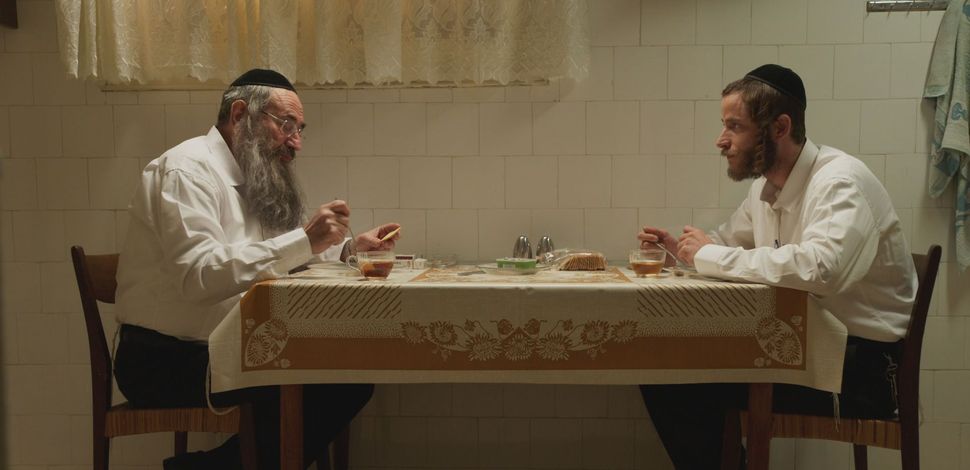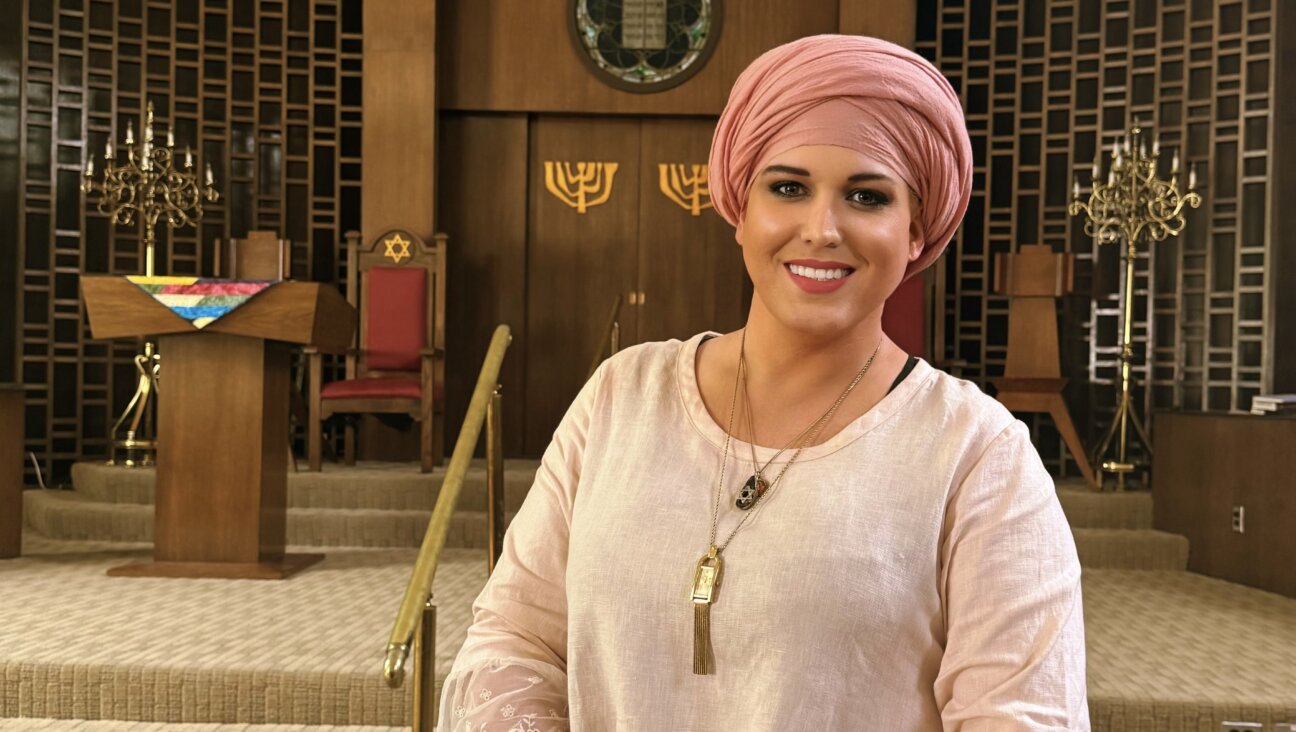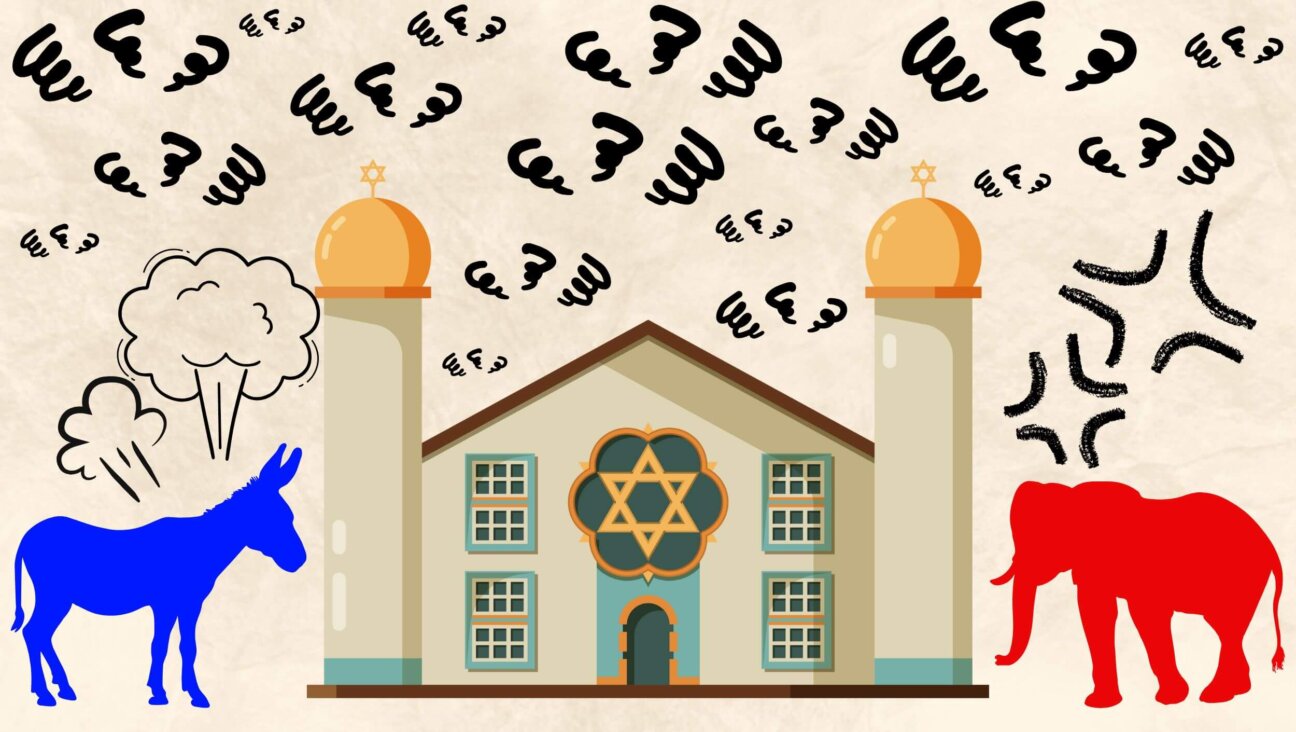Why I Can’t Stop Watching ‘Shtisel’

Image by Courtesy Washington Jewish Film Festival
Ask anyone who has made aliyah to Israel, and they’ll tell you that it’s not always easy, even in peaceful times. As luck would have it, I moved to Jerusalem from California during a particularly challenging period.
I arrived right before Israel’s war with Hamas in Gaza broke out in the summer of 2014. Just days off the plane, I unexpectedly became an expert on taking cover at the sound of an air raid siren.
The war was followed that fall by Palestinian terror attacks on Israelis. Those attacks were renewed last October and grew into the ongoing Knife Intifada, which has involved plenty of killing and maiming by shooting and car ramming as well.
The violence has touched me personally. A longtime family friend, Richard Lakin, was shot and stabbed by Palestinian terrorists while riding a bus in Jerusalem on October 13. He died two weeks later.
The same week I attended Richard’s funeral, Chaim Rothman, the husband of a woman I went to high school with, passed away after languishing in a coma for 11 months. Palestinian assailants had axed him in the head as he prayed in a Jerusalem synagogue on the morning of November 18, 2014.
To distract myself from the harsher realities of living in the Holy Land, I’ve been watching “Shtisel,” a television drama series about a Haredi family in a crowded and impoverished neighborhood in Jerusalem.
As bizarre as it may sound, a show about people governed by strict Jewish law, following ancient customs and living in austere conditions has been my escapist entertainment in recent months.
The series is set in Geula, an area of Jerusalem that is a mere 20-minute walk from my house but one that I have yet to visit since my arrival. In fact, living in the mixed secular and moderately religious south-central part of the city, I rarely interact with Haredim on a daily basis.
At the heart of “Shtisel” is the relationship between Shulem Shtisel, a recently widowed Talmud Torah principal, and his youngest son, Akiva, a bachelor who still lives at home. There is true love between them, but their relationship is fraught with tension over Akiva’s still being single, as well as over his preference for making art instead of studying and teaching Torah. This clash intensifies when Akiva’s paintings gain the attention of a successful secular art gallery owner who secures for him a stipend, a studio and even a solo exhibition at the Israel Museum.
The other main plot lines deal with Giti, one of Shulem’s daughters, and her family. Her husband, Lipa, overwhelmed with the responsibilities of supporting a large family, goes abroad (ostensibly for a job) and disappears for months. Left to raise and financially support the children on her own, Giti almost falls apart under the strain. Lipa eventually returns, but it is not easy for Giti to forgive him. Pained by her parents’ complicated relationship, teenage daughter Ruchama rebels by rashly marrying a young student without telling anyone.
Additional strands of the dramatic narrative involve other members of the extended Shtisel family and their friends and neighbors in Geula. The Haredi lifestyle is presented as a given, and by and large the characters do not strain against its strictures. At the same time, the series does not shy away from dealing with real-life issues facing ultra-Orthodox Israelis, such as the pressure to marry early and the difficulty of supporting large families (especially in cases where husbands study Torah full time).
In general, I don’t look favorably on the insular ultra-Orthodox, who for the most part avoid the Israel Defense Forces’ draft (and denigrate those who do serve), don’t contribute their full share to the economy, and discriminate against women.
Yet, “Shtisel” totally won me over. And I was not the only one who was glued to the screen during the series’s second season, which aired from late October through mid-January. A critical hit in its first season, “Shtisel” became a huge, popular success in its second season among viewers of all backgrounds, including some ultra-Orthodox Jews without televisions who admitted to watching it via streaming video on the Internet.
Americans, too, have a chance to be smitten by “Shtisel” as it makes the rounds on the Jewish film festival circuit. In addition, “Friends” co-creator Marta Kauffman has bought the rights to “Shtisel” and is planning to adapt it for an American television audience.
In Israel, “Shtisel” wasn’t just on cable — it was everywhere. Huge billboards featuring the show’s bearded and side-locked characters popped up in secular Tel Aviv, a city where it’s more usual to see images of bikini-clad supermodel Bar Refaeli looming over the freeway.
Articles, reviews and blog posts about “Shtisel” appeared in major publications. Memes based on the show filled social media feeds. It even got to the point where tossing around the Yiddish expressions regularly uttered by the show’s characters was the way to prove you were hip.
Praise has been heaped on the artfully produced “Shtisel” for drawing the interest of secular Jews toward Haredim and the way they live. On the flip side, much has been written about the show’s unlikely impact on ultra-Orthodox viewers. They’ve been amazed and satisfied to see their world portrayed with accuracy and sensitivity instead of painted with broad, stereotyped brushstrokes.
Everything that made “Shtisel” worthy of the 11 Israeli Film Academy awards it won for its first season held true this time around — and then some. Additional leading Israeli actors, including Sasson Gabai, Hana Laszlo, Lia Kenig and Hadas Yaron, joined the already outstanding ensemble cast. Director Alon Zingman and cinematographer Roey Roth continued to bring an accomplished feature-film feel to the small-screen production.
Most of all, the second season’s script soared with an incredibly artful combination of pathos and humor, thanks to “Shtisel” co-creators and writers Yehonatan Indursky and Ori Elon, as well as to acclaimed Israeli-Arab writer Sayed Kashua, who served as script editor. At times, the show’s dialogue, laden with metaphor and informed by the language of Jewish texts, came across more as poetry than as prose.
Like other “Shtisel” fans, I got carried away wondering if Akiva Shtisel, still unmarried in his late 20s, would stay true to his artistic ambitions or be swayed by his father and uncle to return to more acceptable pursuits. Furthermore, would Akiva and his first cousin Libbi work out their differences and follow their hearts all the way to the chuppah?
Would there be more heartache for Akiva’s sister Giti, married to the unreliable, scheming Lipa? And would their teenage daughter Ruchama’s acting-out as a result of familial dysfunction end up causing everyone additional pain?
Season two of “Shtisel” involved many more interwoven storylines. Together they packed an emotional punch that often moved me to tears.
One might think that all this love, loneliness and longing were what had me hooked. I can’t deny that these tried-and-true themes initially drew me to “Shtisel.” However, they were not what had me marking my calendar so as not to miss an episode.
It turned out it wasn’t primarily the universal and familiar in “Shtisel” that I found so compelling in these difficult times. It was the particularity and foreignness of the show’s setting that gave me comfort.
Usually, the fact that the Haredim live a parallel existence to the rest of Israeli society infuriates me. But things are different right now. The opportunity to be carried away to an almost hermetically sealed, non-Zionist world where the Israeli-Palestinian conflict doesn’t seep in is just what I needed to ease my anxiety, if only for one hour a week.
Renee Ghert-Zand is a freelance journalist living in Jerusalem. Twitter @ReneeGhertZand






















